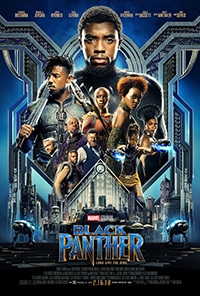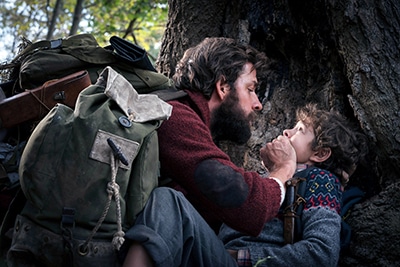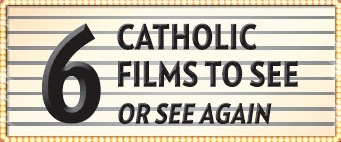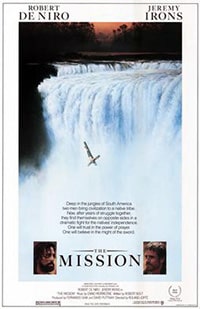As compared to literature and theater, films give you a lot. With literature, you are given words, and by engaging those words, you may imagine scenes, characters and development — but that is work that you yourself have to do. With theater, the unfolding of the drama is happening in the midst of the audience in a specific place, at a specific time. The actors and the audience must reckon with each other. But films give you visuals, audio and motion. They are created in spaces the viewer does not inhabit at a time when the viewer is not present. Films are finished before you arrive and will remain the same after you leave. They are there, and a lot of the work is done for you.
With the now virtually boundless portability and accessibility of films due to the ubiquity of screens, less is demanded of a viewer now than even a decade ago. It is far easier to resort to films — or, more often, video clips — as a form of torpid escapism, filling the moments of idleness or unintentionality at any time in a day. Because films do not strictly demand active engagement, viewers are in danger of becoming passive consumers.
This need not be so. Especially for Catholics whose faith demands a real engagement with the stuff of this world, the engagement with films may become a privileged opportunity to stretch our imaginations, refine our conscience and deepen our wonder at the complexity and subtlety of this world and the mystery of humanity. Films do a lot, and they show us a lot, but sometimes what they show us is either the world we live in but have not seen well enough or a world we do not live in that permits us to see our own world afresh. What films show us can change the way we see our lives.
It might seem that this is a plea for selecting explicitly religious films as the privileged genre for promising some form of redemptive viewing. This is no such plea. While explicitly religious films have their place and, within that place, their own degrees of quality, there are troves of films that are not explicitly religious and which invite viewers to deeper forms of engagement with the world we know but in many ways do not know all that well. These are films that bring us into contact with dimensions of life that would otherwise escape our notice.
From among many others that might be highlighted, I have chosen six films released in the past 20 years that demand more than passive gazing from us as viewers and which promise to draw us into a wider space of realistic imagination. For Catholics, these are the kinds of films that beckon us toward a deeper engagement with the world as it is or as it might be. These are films that urge us to reckon with ourselves and the mystery of being human. These are also the kind of films that can forge bonds of communion between religious persons and nonreligious persons, who together may ponder and question the deeper significance of who we are, who we have been and who we might become.
‘Shrek’ (2001)

Princess Fiona of “Shrek” is basically one more princess in this line of beautiful princesses. She is pining for “true love’s first kiss” and desperate for her “happily ever after.” She even knows her own narrative and is quite insistent about how it is supposed to play out. According to the standard princess script, something ugly has indeed happened to her — namely, she is cursed, and her particular curse is that she turns into an ogre every night. The ugliness must be removed. “I’m a princess” she laments, “and this is not how a princess is supposed to look!” Typical princess stuff.

Not unlike Belle in “Beauty and the Beast,” she falls in love with an ostensibly ugly creature en route to her happily ever after. For Fiona, her beloved is himself an ogre. This is quite unfortunate for a princess because “Princess and ugly just don’t go together.” She knows the narrative, and this doesn’t fit. She is supposed to be freed from ugliness, not in love with ugliness. Fairy tale logic would thus dictate that the ugly, full-time ogre, Shrek, must be changed into something beautiful (or handsome, rather) so that Fiona, who must herself be freed from her nightly ugliness, can have all the lovely things that are meant for princesses.
And indeed, a transformation does come at the end, just when Fiona overcomes her fear of ugliness and actually kisses her true love: Shrek. Again, fairy tale logic dictates that her beauty will now be stabilized (no more Nighttime Ogre Syndrome) while Shrek would, like Belle’s Beast, become a handsome prince. But out of the luminous cloud of transfiguration comes what is absolutely not supposed to be there at the end of the fairy tale: Princess Fiona, the ogre. “But … I was supposed to be beautiful.” To which Shrek responds, “You are beautiful.”
That sounds a little sappy, but really it is the perfect ending to an overtly subversive narrative. This is the inverted fairy tale, the one that critiques fairy tale logic all throughout and reveals not only to Fiona but perhaps also to the viewer just how locked into that logic we all are. She does not change to conform to our typical notions of beauty; rather, the typical notions of beauty are what change. Beauty is not pre-scripted — it is revealed.
‘Children of Men’ (2006)


There is no backstory or explanation as to why procreation has ceased in “Children of Men.” There is no religious reasoning, nor is there a scientific one. All we get in this film is a world in which no one is born and no new child has been conceived for a couple decades. In a world like that, even a single pregnancy would be treated as an event of such world-historical significance that it would be hard not to call it a miracle.
But every miracle may be co-opted to serve one’s own purposes. Who would want to use a pregnant mother and her unborn child to further their own agenda? Who would reinterpret such a miraculous occurrence in a childless world so that it played within their own preferred narrative? Or who, by contrast, would lay everything on the line to allow the mother and child to be truly free?
Maybe we cannot really address these questions in a world like our own where the wonder of pregnancy and emergence of new human life is so common, is routinely taken for granted and sometimes even regretted. Maybe we can only reckon with those questions in a world just like ours but where what is taken for granted has been taken away. “Children of Men” imagines such a world.
‘The Lives of Others’ (2006)

A conversion is more than a change of heart, as if the whims of one moment give way to the whims of another. A true conversion is a fundamental reorientation of yourself, taking on a new end and a new mission. It means giving yourself to something or someone other than what or who you gave yourself to before. A conversion is a fundamental decision about yourself.

But what if, in the midst of his own sacrifice, he observes the self-sacrificing love of the one whom he seeks to destroy? Does what he observes have power over him? Might he have a change of heart? Even more, might he come to the threshold of a new, different, wholly radical sacrifice from the one in which he was previously engrossed?
To contemplate the unbearable lightness of love observed, perhaps we need the suffocating heaviness of East Berlin in 1984.
‘Arrival’ (2016)


When a dozen alien spacecrafts suddenly arrive all over the globe, the whole world is stupefied. No nation knows what to do. No one knows what they want, even though the creatures within the crafts seem to communicate in some manner, primarily through visual symbols. Their language is not just complex, it is full. More is given than we are ready to receive according to our own ways of thinking, speaking and listening. To learn to receive what they have to give, we ourselves must change, grow and expand. The encounter with those whose arrival has shaken the whole world cannot be on our own terms. We want and think and imagine too little.
Their ways are not our ways, and yet are their ways for our good? And if one of us could learn their ways and receive the communication they wish to give us, would she choose to receive it even if receiving it would bring her both immense joy and immense pain? Would she dare to love boldly if the cost of that love were the pain of sorrow piercing her heart?
What do you think?
‘Black Panther’ (2018)

One of the best guides to “reading” this film is the one Eric T. Styles offers in Church Life Journal under the title “Who is an African without Ancestors?” As that title suggests, this is a film about the search for a people of origin, a search that for descendants of Africans sold across the Atlantic into slavery is a search obstructed by an ocean of violent historical severance. Based on the Marvel Comic character and narrative that reaches back all the way to the mid-1960s, the film appeared as a global cultural phenomenon in 2018. It isn’t just another comic book turned action flick. As Styles contends, “no single piece of black cultural production has had the sustained influence and impact on American society since the 1977 television miniseries Roots.” The difference between the two is that whereas Roots asks “What happened?” in regards to the history of chattel slavery, “Black Panther” instead asks “What if?”

“Black Panther” takes the dominant historical narrative of the world we have come to know and places within it a narrative that those of especially European heritage have likely not imagined. At the same time, as Styles puts it, “‘Black Panther’ attends to the loss of homeland and fathers as a symbolic origin story for Black America.” It is an origin story that is as much about the future as it is about the past, all the while imagining “What if?” For Christians who are quite accustomed to perceiving a deeper history within the standard narrative of history that the world observes, this “what if” is not so foreign or distant an idea as one might first think when considering a comic book narrative.
‘A Quiet Place’ (2018)


What if all the noise we produced suddenly turned on us? What if rather than the long, slow, spiritual and emotional dissipation that we may already feel that all this incessant noise is causing in our lives, we instead were immediately devoured for making noise? Not figuratively devoured, mind you, but actually, physically devoured. That would be a horrible world, but might it also hide its own silent beauty?
“A Quiet Place” is a film for our times. It takes the slow, creeping horror of a world that Cardinal Robert Sarah has described as under the “tyranny of noise” and creates a world where noise bears immediate consequences. And in the slow, deliberate, and unassumingly premodern life of the near future, this film proposes a reexamination of what we fill ourselves with at all hours of the day: more and more noise.
Leonard J. DeLorenzo, Ph.D., is director of undergraduate studies in the McGrath Institute for Church Life and teaches theology at the University of Notre Dame. Find information about his books, articles, and public speaking at leonardjdelorenzo.com.

“The Mission” (1986)
 Set in 18th-century South America, “The Mission” is a story of evangelization, sin and redemption, and contrasting visions of religious courage that, in the end, come down to the meaning of Eucharistic solidarity. The soundtrack by Ennio Morricone is itself a masterpiece. The sights, the sounds and the narrative will stay with you. Set in 18th-century South America, “The Mission” is a story of evangelization, sin and redemption, and contrasting visions of religious courage that, in the end, come down to the meaning of Eucharistic solidarity. The soundtrack by Ennio Morricone is itself a masterpiece. The sights, the sounds and the narrative will stay with you. “Babette’s Feast” (1987)
A seemingly simple and unassuming film, the story meditates on the gratuitousness of a generous banquet prepared at a cook’s personal expense. As the plot develops, the Eucharistic character of this feast becomes more and more apparent, as a gift of enormous sacrifice offered for those who may indeed be unworthy to receive.
 “Saint Philip Neri: I Prefer Heaven” (2010) “Saint Philip Neri: I Prefer Heaven” (2010)True, this film is long (3 hours, 20 minutes) and in Italian with English subtitles, which would ordinarily be two strikes against enjoyment for most people. But the movie is a gem that gives what every other biography of St. Philip Neri attests: This man of joy had an unrepeatable personality.
 “Of Gods and Men” (2010) “Of Gods and Men” (2010)This in an intimate and painfully gorgeous portrayal of the Trappist monks of Tibhirine, who live and serve among the Muslim population of Algeria. During the 1996 Algerian Civil War, seven of the nine monks were kidnapped and executed. This film is about the beauty and commitment of their Christian life, which was the altar upon which their sacrificial death was offered.
 “Outcasts” (2017) “Outcasts” (2017)“Outcasts” provides a close-up and bold examination of the mission and Gospel service of the Franciscan Friars of Renewal, who place themselves in the midst of the most troubled places and among the most neglected people across the globe. The film takes us to the prisons of Central America, the dark streets of London and New York, and into Ireland’s most treacherous neighborhood. The film is available to stream at outcaststhemovie.com/media.
 “A Hidden Life” (2019) “A Hidden Life” (2019)This is the story of Blessed Franz Jägerstätter, a humble Austrian farmer whose solitary witness against the Nazi regime brought about the ultimate sacrifices for both him and his wife, in different ways, revealing the hidden power of Christian witness against the gravest evils. From his historical obscurity, the Church raised him up during the Second Vatican Council as part of the development of the teaching on conscientious objection.
|





